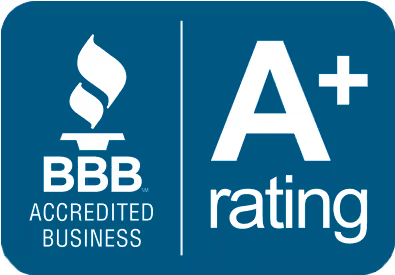
It’s a key part of all our homes! As one of the most common interior building materials used in your home, it’s likely that you will experience drywall damage at some point in your home’s life. For drywall water damage, it can occur when there’s been a flood that gets into your home. Or it can happen when there’s been a water leak in your house such as from a leak in your plumbing. You may be wondering if there’s a way to save your drywall instead of having to replace it—but the answer is a bit trickier than a simple yes or no.
To find out, it’s important to first understand that drywall is typically made mainly of gypsum with some glued paper—the way that gypsum interacts with water is that it can retain water and moisture for a lengthy period, which can lead to problems if there’s too much water. If you’re wondering if wet drywall can be saved or how to repair wet drywall, be sure to read on!
While it is possible, trying to save your drywall runs the risk of mold growth still happening should any moisture be left behind. It is highly recommended that you get the drywall replaced. But you can at least slow down any mold growth that may occur while you await repairs. Should you discover the wet drywall shortly after it has gotten soaked, you may be able to dry it off with the aid of drying rags, a fan, and a dehumidifier. Soak up any standing water that you can with the rags. Then use a dehumidifier and a fan to remove airborne moisture and encourage air circulation.
Call for a professional contractor to help with their drying techniques and specialized drying equipment. With their expertise, there is a chance that your drywall can be saved.
If too much water has already soaked into your drywall, it will likely continue to deform and fall apart. In turn, drywall replacement will be necessary. Furthermore, if your drywall has been wet for over 48 hours, there’s a chance of mold growth. Should mold begin growing in that portion of the drywall, it can spread to any wooden materials close by. Whether it’s from deformation or from mold, affected drywall should be removed and replaced by a professional. This repair will ensure that your home remains safe—if mold is involved, you may need wet drywall repair and professional mold removal.
There are ways to see if your drywall can dry up on its own or if you need a professional. First and foremost is to perform these checks as soon as possible. This way, no matter the course of action needed, you can get it done hopefully before mold appears.
Check for damp or saturated drywall and make the needed replacements ASAP. This will help make sure you have a properly insulated wall. It will help prevent mold growth in your house.
When mold begins to grow in your house, it will start releasing spores into the air. This is a part of its life cycle. But those spores can get caught up in the air circulating in your home. Next, the mold spores may reach your living spaces, potentially triggering allergic reactions ranging from congestion to severe asthma attacks. If your drywall has been wet for more than 48 hours, the safe option would be to have it promptly removed and replaced with new drywall. The sooner the better, and you can keep your home free of mold!
Should you notice an odd discoloration in your drywall after it’s gotten wet, there’s a chance that mold has already taken hold. It will likely take any opportunity to spread, creating potential health hazards as well as damage to your house structure. With over 64 years of expertise in mold removal, ’58 Foundations & Waterproofing can help put a stop to mold before it gets worse and wreaks havoc in your home! Give us a call today for a free inspection and a detailed estimate—we’ll be happy to help with all your wet drywall repair needs!






We respect your privacy. By submitting, you authorize '58 Foundations and Waterproofing to reach you via call, email or text for information about your project needs. We will never share your personal information with third parties for marketing purposes. You can opt out at any time. Message/data rates may apply. Consent is not a condition of purchase. Privacy Policy